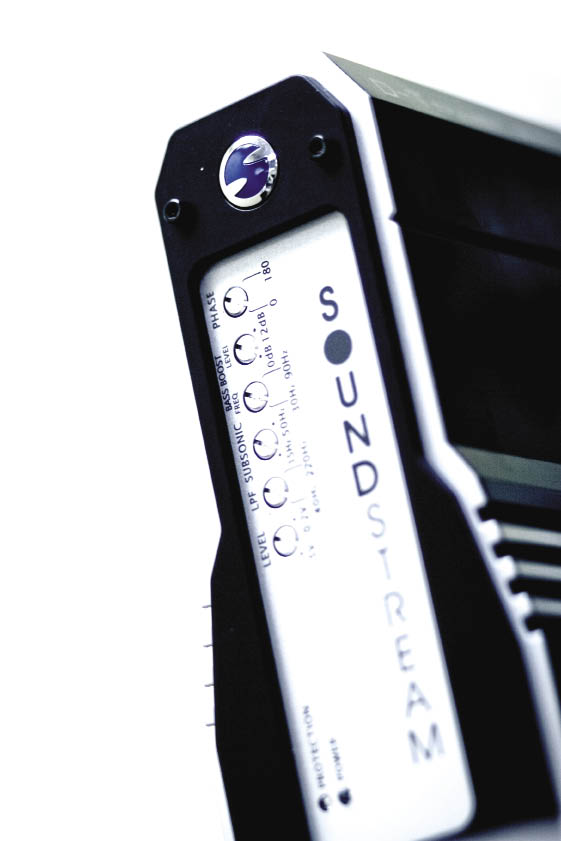 Having spent most of my adult life in the audio industry, and most of that time working with car audio, I’ll admit to being a bit jaded when someone tells me about their “new and unique” car stereo product. To be honest, it’s not all that often that something really fresh and truly different comes along. But after wearing out some serious shoe leather at this year’s Consumer Electronics Show, I think I’ve actually found a few things that are truly new and unique, and this review is all about one of them.
Having spent most of my adult life in the audio industry, and most of that time working with car audio, I’ll admit to being a bit jaded when someone tells me about their “new and unique” car stereo product. To be honest, it’s not all that often that something really fresh and truly different comes along. But after wearing out some serious shoe leather at this year’s Consumer Electronics Show, I think I’ve actually found a few things that are truly new and unique, and this review is all about one of them.
While strolling through the Soundstream booth, I spotted one of their new D Tower vertical standing amplifiers. In a category where mounting space is always at a premium, and installers jump through burning hoops to fit as much gear as possible into tight spaces, this was one of those ideas that screams, “why the hell didn’t I think of that”!
There are 6 amplifiers in the series, 5 of them being single channel Class D subwoofer amps ranging in power from 900 watts to 3400 watts, and the sixth is a 4 channel full range Class AB model. I thought it would be cool to review one of these unique looking amps, and a simple request was all it took to put a DTR1.1400D in my hands.
The concept behind this design is to minimize the amount of floor area needed to mount the amplifier, and also to provide as clean and organized an installation as possible. To that end, the DTR1.1400D takes up a mounting area of only 3.3 inches wide x 11.7 inches long and 7.5 inches high. In fact all the models share the same mounting width and height, only the length dimension changes. These dimensions make the amplifier ideal for tight spaces like regular cab pickup trucks, and because of the way the amp dissipates heat, Soundstream claims that the amp can even be mounted upside down on a sedans rear deck!
The amplifier comes with custom nylon feet that are used to securely mount and electrically isolate the amplifier from the cars chassis to prevent ground loop noise. Just in case you really want to mount the amp in a more traditional fashion, there are a couple of longer mounting feet that will allow the amp to be mounted lying down, but it’s not as cool looking.
To make things easy and clean looking, all of the wiring connections are found on one end of the amplifier, and all of the controls are on the opposite end.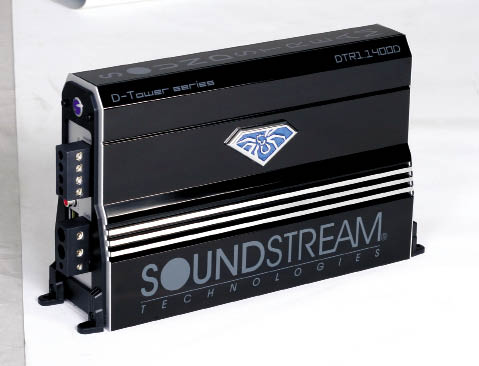
The D Tower series amps are finished in a high gloss black powdercoat, and have excellent fit and finish. This treatment is applied to every surface, as the available mounting options could allow any of the sides to be seen, so they all have to be well finished. Wiring connections are made with sturdy hex head set screws, and thoughtfully, they are all the same size, so you don’t have to run back and forth to the toolbox. Power connections will easily accept full spec 4 gauge wire, and the speaker terminals will handle up to 6 gauge cables. There is no on board fuse, but the manual suggests a 100A fuse be installed for this model. A remote mounted level control is optional.
On the control end of the amp, the pots are metal, and mounted flush with the end panel for easy access, but no accidental bumps will change the settings. The pots are also detented, with about 40 clicks covering the 270 degrees of rotation. Controls on the DTR1.1400D include Gain, Low Pass Filter, Subsonic Filter, Bass Frequency and Bass Boost, and a Phase control. Also found on this end of the amp are blue Power and red Protection LED’s.
The owner’s manual is a straightforward and fairly basic affair, covering the entire series with 10 pages of clearly written information, and well drawn diagrams. Quite frankly, if you can’t install and adjust this amplifier using the included manual, you probably should not be working on a car anyway.
Of course I had to take it apart, and what I found on the inside was just as nicely made as the exterior. The amp uses typical Class D technology, with 10 high current HEXFET MOSFETS in the power supply, and 8 high current MOSFETS in the output stage. Energy storage is handled by 5-2200µF capacitors for the power supply, and 2-4700µF caps for the output. The printed circuit board is high quality FR4 material, and uses very low tolerance surface mount parts where ever possible. The PCB is mounted to one “side” of the amplifier, and I wondered how well the heat would transfer to the other side. As it turned out, the heat generated was dissipated quite equally by both sides of the amp, with temperatures remaining within a few degrees of each other from one side to the other.
Related Articles
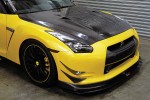 PASSWORD: JDM - Dry Carbon GT-R Parts
PASSWORD: JDM - Dry Carbon GT-R Parts
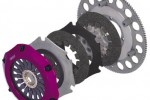 Project R32: Proper Exedy Racing Clutch Selection
Project R32: Proper Exedy Racing Clutch Selection
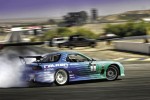 Getting Hyphy: Calvin Wan's 1993 Mazda RX-7
Getting Hyphy: Calvin Wan's 1993 Mazda RX-7
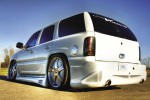 BIG BALLIN'
BIG BALLIN'
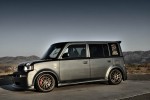 Rugrat: Sean Driscoll's 2004 Scion xB
Rugrat: Sean Driscoll's 2004 Scion xB
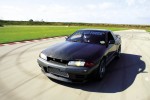 Project R32: Adjustable Suspension Links
Project R32: Adjustable Suspension Links




